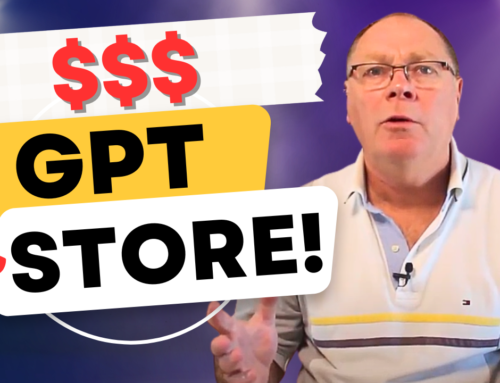How to start an email: 5 powerful hacks to get emails opened
In this article, we’ll look at how to start an email the right way using a carefully crafted subject line and psychology hacks that ensure your email captures attention and has the best chance of being opened by the recipient.
I’ll assume you know the basic stuff like salutations – Hi, Hey there, Good day, Dear Sir (don’t use that, please), etc. and get straight to the heart of what REALLY makes your emails a success – getting them opened in the first place.
This is PART 1 OF A 3-PART SERIES that covers the three essential elements of a successful email – the subject line, the body text, and the call to action (CTA) & signoff.
Before we get into the details of how to start an email, let’s clear something up once and for all.
How to start an email that leads with value
With the rise in alternative ways of reaching potential customers, notably social media, there has been a lot of debate about the effectiveness of email marketing with some even going as far as to say building an email list is no longer worth the effort.
While there may be some truth in the argument that open rates for email are not what they once were, let’s be clear – an engaged email list is still the single best asset any business can possess, period.
Notice I said engaged, and that’s key.
Sending out pointless, spammy emails trying to flog the latest miracle marketing tool is a recipe for disaster, no wonder open rates for such email tactics are down the toilet.
It’s really quite simple.
Provide real value to your subscribers right from the get-go and engagement (there’s that word again) is the gift that just keeps on giving.
Crafting a great subject line
What makes a good subject line great, what kind of subject line gives your email the best chance of being opened, and what’s the psychology behind a successful subject line – all good questions that we’ll answer next.
Although we won’t specifically discuss AI writing tools in this article, they can be a rich source of inspiration, so consider their use to give you inspiration.
Here’s a YouTube video I made about email subject lines in case you prefer to watch rather than read – Email copywriting teardown #1 (there’s also a PART 2 – Body Copy & part 3 – Calls to Action. Just follow the links on YouTube).
Writing effective email subject lines is a formula
Getting your subject lines on point is not that hard.
In fact, it’s a formula that encapsulates how to start an email effectively – a formula you can learn if you just take the time to absorb a few concepts and rules.
Up to 33% of recipients decide, based solely on the subject line, whether to even open an email, so it’s critical you make your subject lines the very best they can be.
But, what constitutes a good subject line in the first place – here are a few pointers to set the scene:
- Remember the person potentially opening and reading your email is just that – a real person. This often gets overlooked as it’s easy to think of an email list of hundreds or thousands of names and email addresses as just a collection of data fields. This is a common mistake.
- Each person on your email list is a sentient being and as such is driven by the human emotions that we all feel.
- Your best chance of success with your subject line is to tap into these human emotions and make an emotional connection with your reader.
Emotional traits we can tap into with email
When you think about how to start an email, consider the emotional traits you can potentially tap into, here are 5 examples:
1. Fear of missing out (FOMO)
A huge driver for us as human beings is the fear of missing out or FOMO. Nobody likes to think they’re going to miss out on a bargain, a special offer, or a good deal.
Here are a couple of examples from my video:
“Uh-oh your prescription is expiring” – Warby Parker
This email subject line clearly plays into your fear of missing out, you feel you need to take some action to prevent this from happening. Depending on how seriously you need what’s being prescribed, there’s no doubt an email with this subject line has a high chance of being opened.
“Your 7-figure plan goes bye-bye at midnight” – Digital Marketer
This headline creates a sense of urgency and a fear of missing out because it will disappear, but it also cleverly uses a number to give you some scale as to what you’re potentially missing out on. 7 figures is over a million dollars!
Note: numbers are good in headlines and it has been proven that odd numbers work better than even numbers.
“Tonight only: A denim lover’s dream” – Guess
A clothing brand that uses FOMO to get potential customers to take action, especially fans of denim clothing. Again scarcity is used – tonight only. If you’re into denim clothing, you’d most likely not want to miss out on this limited opportunity.
2. Curiosity subject lines
Appealing to an email recipient’s sense of curiosity can be an excellent way to make sure your emails get opened. Remember, at this stage, the object of the exercise is to make sure we encourage as many people as possible to open the email, the all-important starting point.
“Don’t open this email” – Manicube
Although this might seem counterintuitive as an email subject line, I don’t know about you but if someone tells me not to do something, I’ll likely do the opposite.
We’re all curious beings, and many of us act entirely contrary to what we’re advised or told to do, and that’s why this kind of email headline can work so well.
So, employing curiosity is a great example of how to start an email in a way that’s almost irresistible to your reader.
“9 Disgusting facts about Thanksgiving” – Eat This Not That”
This email subject line really grabs your attention, it slaps you straight in the face with something so outrageous that you’ve just got to open this email to see what it’s all about.
“10 Bizarre money habits making Millennials richer”
This is a good one because not only does it play on your natural curiosity (of course you want to know what Millennials are doing to become rich, but it also brings FOMO into play as well.
If you’re a baby boomer and not a Millennial, you definitely want to know what the younger generation is doing to get richer – right?
Curiosity is a powerful emotion you can tap into to get your emails opened.
3. Funny email subject lines
Using humor in your email subject lines can work well – we all like a bit of fun in our lives from time to time.
“Boom shakalak! Let’s get started” – Tik Tail
A funny and striking subject line that will not only likely brighten up your day if you’re sitting in some boring office job (for example), but will make you want to open and read the email.
It’s definitely something different to the usual boring stuff that arrives in your inbox and therefore has a good chance of capturing your attention.
“Try to avoid these 27 people on New Year’s Eve”
Funny, but what the heck’s it about?? I’m going to want to open this email. Note also the use of a specific odd number.
“Yes, I’m pregnant. You can stop staring at my belly now” – Baby Bump
Plenty of humor in this email subject line with the added benefit of being very relatable. It’s often hard for some people not to stare at a pregnant woman’s bump, so this subject line definitely makes you smile.
4. Vanity email subject lines
Appealing to the reader’s vanity is another great way to ensure you maximize your email open rates.
“Your butt will look great in these workout pants” – Fabletics
Lots of people who are into going to the gym and keeping fit can be quite vain, I’m sure you’ve seen that.
This is where appealing to the reader’s vanity, where it makes sense, can be very powerful.
“Products the celebs are wearing” – Sephora
People tend to follow celebrities and have an interest in what they’re doing and wearing. This email subject line suggests you can find out about what they’re wearing so you can perhaps follow their lead and be seen as trendy as them or up with fashion.
Acting and dressing like a celeb must be the ultimate expression of vanity!
“Age-defying beauty tricks”
If you’re vain, one of the things you’d most likely want to avoid as long as possible is the inevitable aging process. As women and men get older, invariably they want to look their best, so this headline would be very appealing indeed.
5. The final emotion – greed!
Unfortunately, greed (whether conscious or unconscious) can be a major driver for some people.
Here are a few examples of how to start an email with subject lines that appeal to this base emotion.
“Get a head start on summer” – Top Shop
Essentially, you want to get ahead of everyone else, you may be greedy for a bargain, you want the best clothes for yourself.
“25% off your favorites”
Let’s be honest, saving money generally appeals to all of us, and ultimately this can also be thought of as an extension of greed. If you can save 25%, you’ll most likely open that email to see what’s involved and if you can pick up a bargain.
“A little luxury at a great price” – La Mer
Similar to the previous example, you’re displaying greed by hoping to get something that is normally associated with expense (luxury) for a bargain price, for cheap.
How to start an email – summing it all up
There you go, a selection of headline types that show you how to start an email the right way by capturing the reader’s attention and convincing them to open your email to find out more.
Use the tips here to write irresistible openings (headlines) for your emails and you’ll see your open rates and conversions increase as a result.
Note: This article covers part 1 of a 3-video series I recorded on YouTube. You can find Parts 2 & 3 linked in the YouTube video for this Part 1 (click on the video above to visit Part 1).
FAQ
Q. Can you explain how to start an email with the right tone of voice?
A: Sure, as a rule, it’s best to go for friendly but professional. Emails are short, so it’s important to get the reader onside quickly by using the tips in this article and an engaging tone of voice.
Q. How many words should an email be?
A. Generally speaking, keep emails to a maximum of 150 to 200 words and get your call to action in early. Normally, shorter is better unless you specifically need a longer email for a particular purpose.
Q. You mentioned AI at the start of the article, where can I find out more?
A. Here’s another post where you can delve into AI in writing tools and other resources that may help you: https://lesblythe.com/ai-writing-tools





And you used the FOMO in the email that brought me here Les. Ya got me!
Gary H.
Lol Gary, see, this stuff works! Cheers.
Put it this way; I clicked through to this blog post from one of Les’ emails. The man knows what he’s doing.
Thanks Alex, good to see you here!